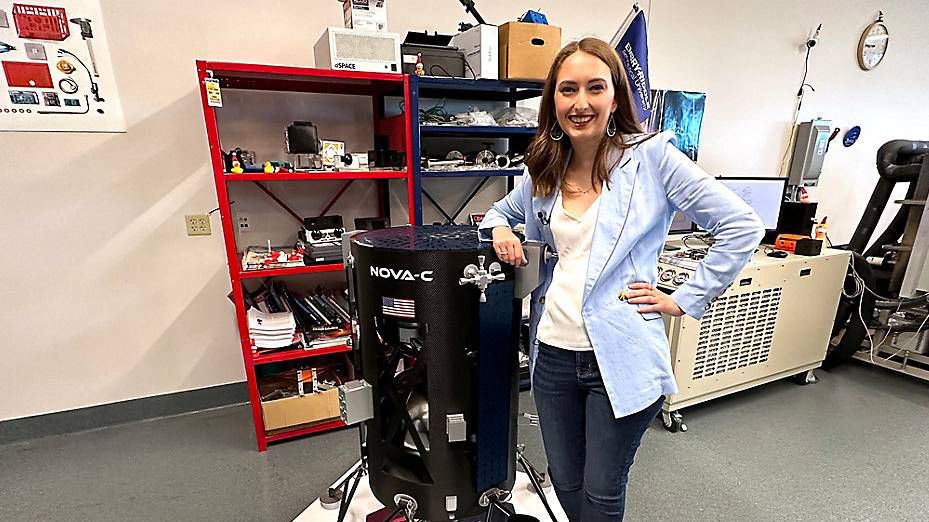VOLUSIA COUNTY, Fla. — The Nova-C lunar lander, designed by a private company, will deliver small commercial payloads to the surface of the moon no sooner than in March. The official date of the launch has not yet been determined.
What You Need To Know
- Small camera to take a picture of the Nova-C lunar lander when it travels to the moon
- The launch will occur sometime in March
- A team of students from Embry-Riddle desgined the camera and technology for this mission
- Three facts about the Nova-C lander below
When the Intuitive Machines-designed Nova-C lands, a small camera named Eagle Cam will detach itself from the Nova-C and will travel to the moon’s surface first to get in position for the lander.
It will be the first lander to take the world's ultimate selfie when it travels to the moon.
During the Apollo missions, photos were taken from the point of view of the lander.
On this mission, they will take pictures of the actual lander.
Taylor Yow, a graduate student at Embry-Riddle Aeronautical University, is one of the team members to design the camera and technology that will take photos of the upcoming landing.
“About 30 meters above the surface, our Eagle Cam will deploy and fall following the descent of the camera,” Yow said. “And when we land on the moon, we will have about 12 seconds before the lander lands, and we are taking pictures the entire time.”
The actual lander (Nova-C) will be more than 9 feet tall and more than 6 feet wide.
The same team is also working on the Polaris-Dawn mission camera that will record the first civilian spacewalk later this year. The official date for this mission has not been determined either.
Three things about the Nova-C lander that you might not know:
- Lander will land on the moon in the Vallis Schroteri region.
- Solar panels on the lander will generate 200 watts of power.
- Lander can operate for 14 Earth days in sunlight.




